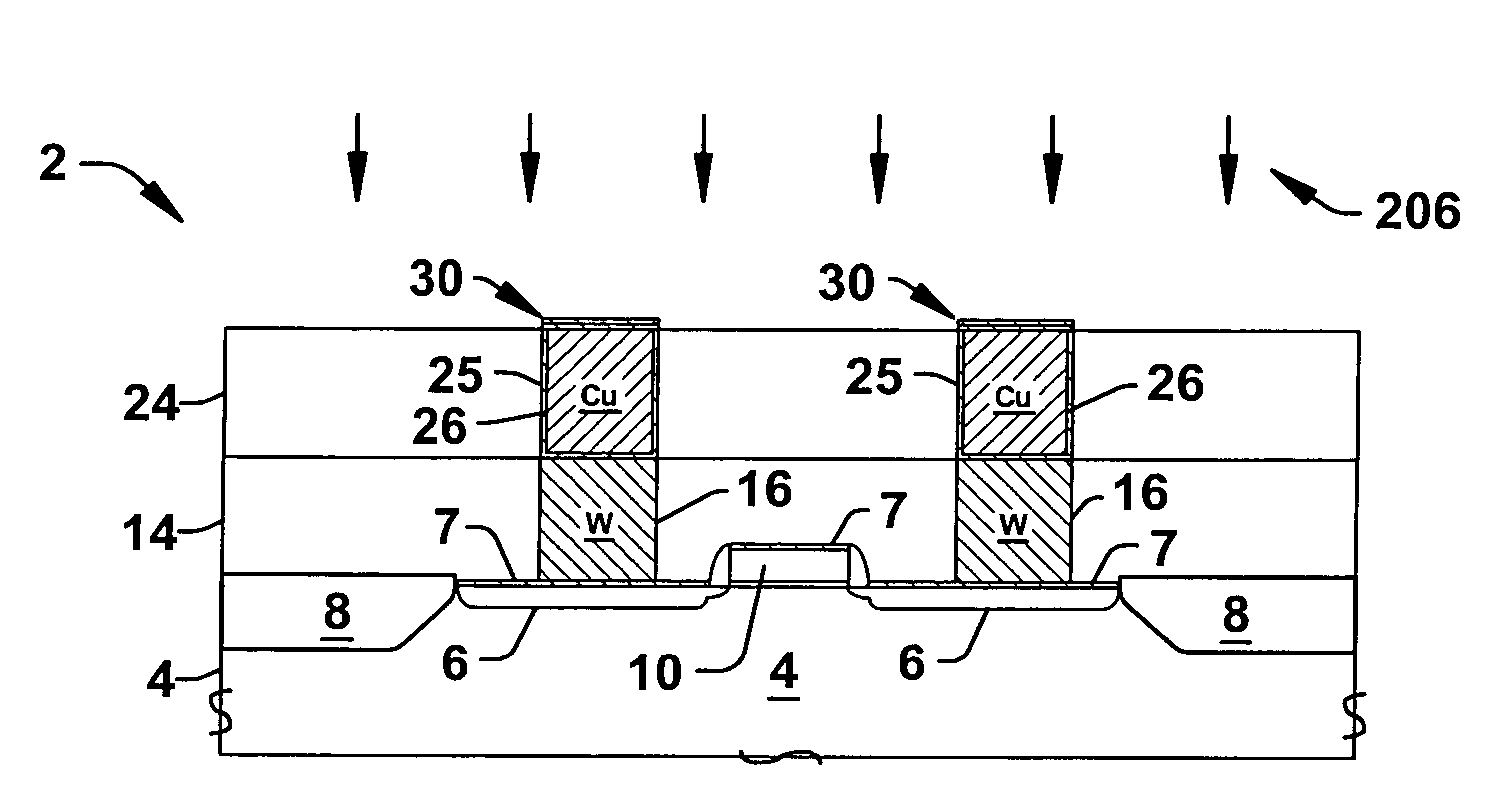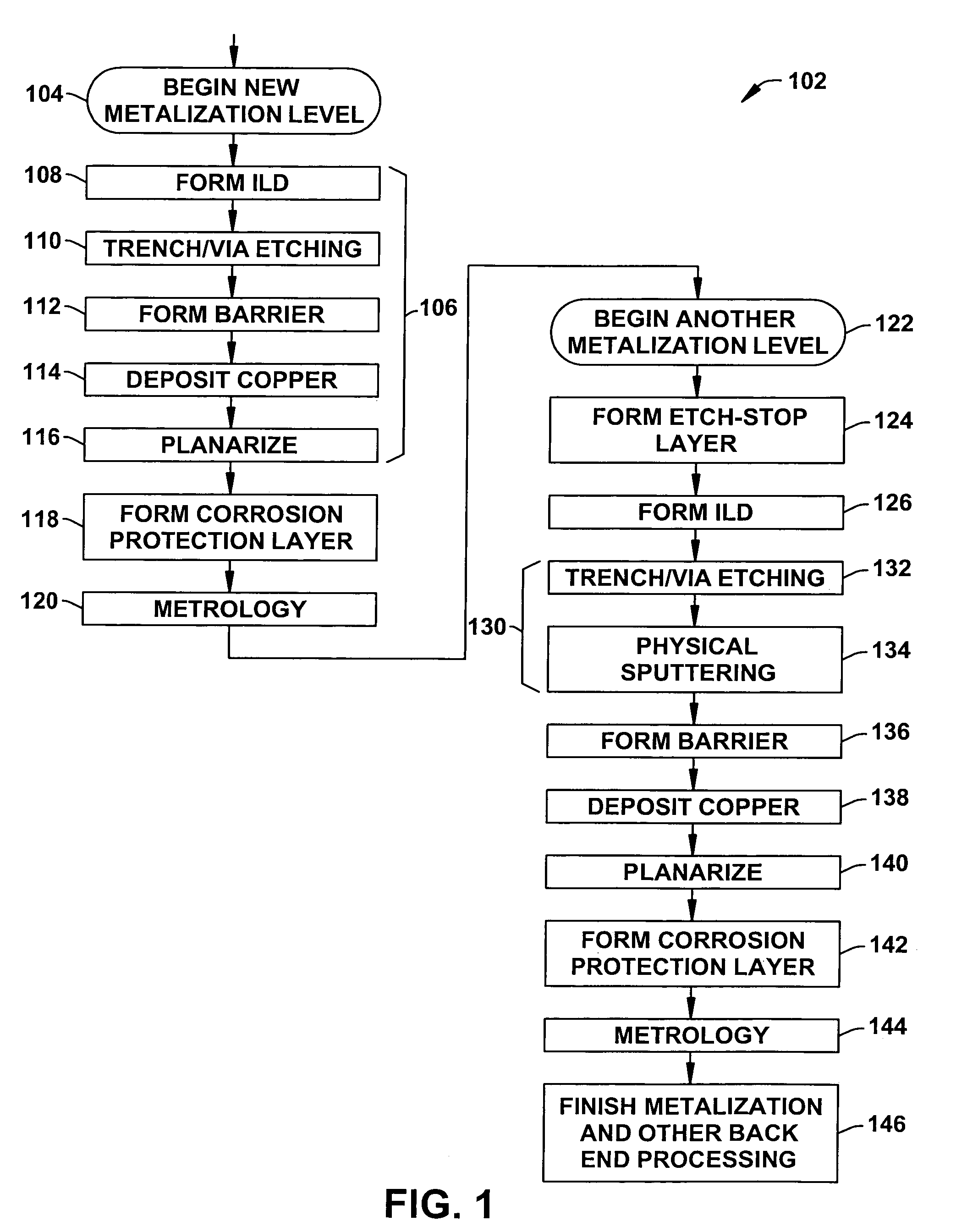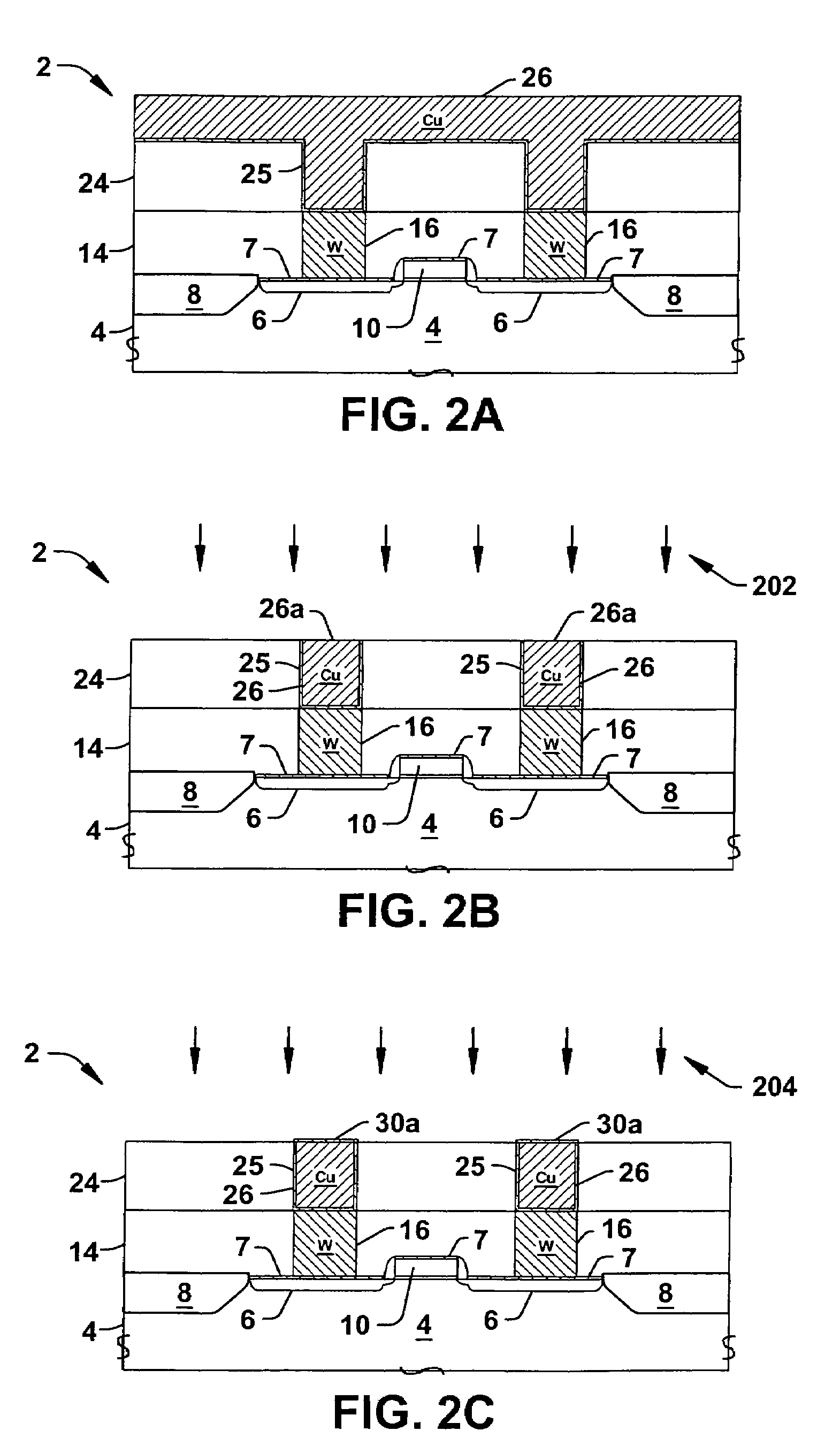Post-polish treatment for inhibiting copper corrosion
a post-polish treatment and copper technology, applied in the field of methods for treating copper structures, can solve the problems of increasing contact resistance and adhesion problems, interconnect leakage, and reducing the amount of metrology after cmp, so as to facilitate inspection and measurement, and facilitate sometimes lengthy metrology operations.
- Summary
- Abstract
- Description
- Claims
- Application Information
AI Technical Summary
Benefits of technology
Problems solved by technology
Method used
Image
Examples
Embodiment Construction
[0014]The present invention will now be described with reference to the attached drawings, in which like reference numerals are used to refer to like elements throughout, wherein the illustrated structures are not necessarily drawn to scale. The invention relates to semiconductor device interconnect system fabrication processing and methods for protecting copper against corrosion, which may be employed at any point in a fabrication process flow. The invention is hereinafter illustrated and described in the construction of damascene type metalization interconnect structures, wherein protection is provided to prevent corrosion of copper surfaces exposed after planarization. However, the invention is not limited to the exemplary implementations illustrated and described hereinafter. In particular, the various aspects of the invention may be employed in association with processing of any type of copper structures, and may be used for protecting any surface or surfaces thereof from corro...
PUM
 Login to View More
Login to View More Abstract
Description
Claims
Application Information
 Login to View More
Login to View More - R&D
- Intellectual Property
- Life Sciences
- Materials
- Tech Scout
- Unparalleled Data Quality
- Higher Quality Content
- 60% Fewer Hallucinations
Browse by: Latest US Patents, China's latest patents, Technical Efficacy Thesaurus, Application Domain, Technology Topic, Popular Technical Reports.
© 2025 PatSnap. All rights reserved.Legal|Privacy policy|Modern Slavery Act Transparency Statement|Sitemap|About US| Contact US: help@patsnap.com



